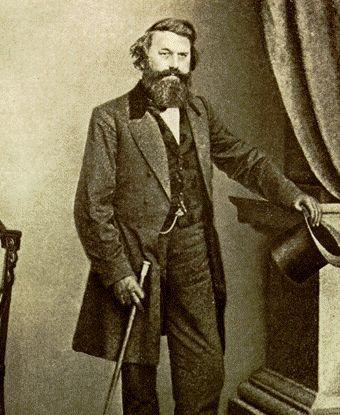Last updated: November 10, 2018
Person
Louis Wigfall

Library of Congress's Prints and Photographs Division
Louis Trezevant Wigfall, a Texas politician and briefly an officer in the Confederate States Army, advocated for slavery and secession. His rhetoric earned him a place with other leading Fire-Eaters: William Lowndes Yancey, William Porcher Miles, and Roger Atkinson Pryor. He witnessed the Confederate bombardment of Fort Sumter from Morris Island while serving as an aide to General P.G.T. Beauregard. Wigfall also played a role in securing the Union’s evacuation of Fort Sumter.
Wigfall was born on a plantation near Edgefield, South Carolina. Wigfall bounced between different universities for his degree and at one time abandoned academics entirely to fight in the Third Seminole War in Florida. After his graduation from the South Carolina College (now University of South Carolina), Wigfall pursued a career in law. His interest in politics later overshadowed his law career.
In 1848, Wigfall left South Carolina for Texas, leaving behind political battles that had escalated into fighting in duels. In Texas, Wigfall became a staunch opponent of Governor Sam Houston for his Unionist views and became an important Democratic leader in the state. Wigfall was elected to the US Senate by the Texas legislature in 1859 and served until March 1861.
Wigfall, addressing the Senate in December 1860, outlined his views on the relationship of the states with the Union and criticized the Northern freedom of press.
“You shall not publish newspapers and pamphlets to excite the non-slaveholders against the slaveholders, or the slaveholders against the non-slaveholders. We will have peace; and if you do not offer it to us, we will quietly, and as we have the right under the constitutional compact to do, withdraw from the Union and establish a government for ourselves; and if you then persist in your aggressions, we will leave it to the ultimo ratio regum (a resort to arms), and the sovereign States will settle that question. And when you laugh at these impotent threats, as you regard them, I tell you that cotton is king.”
Wigfall traveled to Charleston, South Carolina as the Confederacy verged upon open warfare with Major Anderson’s Union garrison at Fort Sumter. He secured a position as an aide to General Beauregard. On the second day of the battle, the flag above Fort Sumter fell, and Confederates wondered if Anderson wished to surrender. Wigfall, on his own initiative and without orders, commandeered a rowboat on Morris Island and had Private Gourdin Young of the Palmetto Guard and two slaves take him out to Fort Sumter. Upon arrival, he sought an audience with Major Anderson and climbed into the fort through an open embrasure.
“Your flag is down, you are on fire,” Wigfall told the Federals, “and you are not firing your guns. General Beauregard wants to stop this.”
Wigfall succeeded in ending hostilities and granted generous evacuation terms, but the arrival of aides directly from General Beauregard with different information enraged Anderson who felt he had been misled and lied to by Wigfall. Eventually negotiations succeeded in calming the situation and securing an end to the first battle of the Civil War.
Wigfall followed this bizarre role in the opening acts of the war as an ineffective and often drunk brigadier general until February 1862 when he resigned his commission to take a seat in the Confederate Senate. Similar to his time in the US Senate, he advocated for states’ rights and loudly disagreed with President Jefferson Davis’ strong national government approach.
At the end of the war, Wigfall returned to Texas and then sailed to Great Britain in exile where he attempted to create conflict between Great Britain and the United States. He returned to his native country in 1870 and finally died in Galveston, Texas in 1874.
